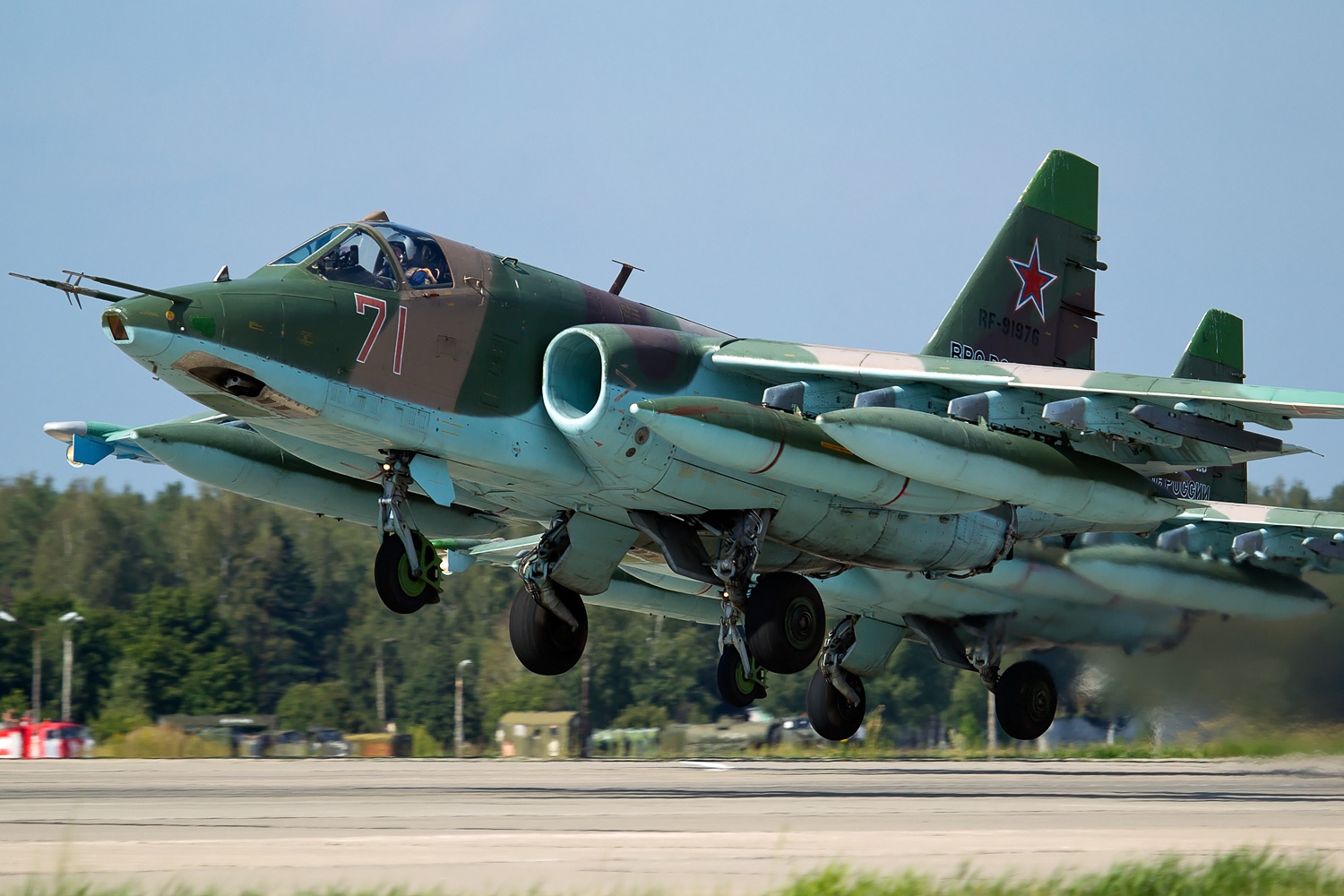A Soviet-era Russian Su-25 ‘Frogfoot’ came down in flames amid aggressive Ukrainian retaliation to Russian shelling, according to multiple reports.
Ukrainian President Volodymyr Zelensky recently made an emotional pitch begging for military aid that could help strike enemy positions amid relentless Russian shelling on Ukrainian positions in the Luhansk region.
A Russian Su-25 attack aircraft reportedly crashed in Belgorod. According to initial reports, it may have clipped a power line.https://t.co/WjpnwI6J5J pic.twitter.com/Xfl1H8vb05
— Rob Lee (@RALee85) June 17, 2022
Reports suggest that a Russian Su-25 fighter jet crashed near the Ukrainian border. A video showed the fighter’s charred wreckage near Russia’s Belgorod region, which shares borders with Ukraine’s Luhansk, Kharkiv, and Sumy provinces.
The cause of the crash is unknown at this time; however, there are suspicions that it was shot down, as the crash site was just 32 miles from the Ukrainian border.
According to reports, Russian officials said the pilot successfully ejected the fighter jet.
The Su-25 was on a training flight and not a combat mission, according to the Russian Western military district, which identified a “technical malfunction” as a probable cause of the crash.
The incident comes just a day after the Russian state TASS Agency reported that Russian air defense forces shot down a Ukrainian Su-25 ground attack plane in the Kharkiv Region.
“Russian air defense capabilities shot down a Su-25 plane of the Ukrainian Air Force in the area of the community of Mazanovka in the Kharkiv Region,” the spokesman said.
Media report that a #Russian Su-25 military aircraft crashed in the #Belgorod region. pic.twitter.com/FoE02To7vz
— NEXTA (@nexta_tv) June 17, 2022
Previously, on June 12, three Sukhoi Su-25 assault aircraft of the Ukrainian Air Force were shot down by Russian air defense systems and fighter aircraft in a single day, according to Lieutenant-General Igor Konashenkov, an official representative of the Russian Ministry of Defense.

The Su-25, popularly known as the ‘Frogfoot’ by NATO, is a Soviet-era attack aircraft used widely by Russia and Ukraine. The Russian ‘Frogfoot’ jet, capable of carrying 9,000 pounds of bombs, rockets, and missiles, is part of the invading troops’ air strategy in Ukraine.
However, this lethal attack aircraft in the Russian inventory has not gone unscathed. In May, a Russian air force Major General Kanamat Botashev, was killed after his Su-25 fighter jet was shot down by Ukrainian forces using a Stinger missile.
Russia has recently intensified its attack on two eastern cities of the Donbas region in Ukraine, using its Soviet-era rockets that carry high payloads and attack civilian settlements but have little precision strike capabilities, noted the EurAsian Times.
However, the Ukrainian troops seem to be emboldened once again after receiving aid from the US and other states.
‼️??Moving on to Slavyansk: The special forces of the ''⭕️'' attack the enemy and advance
The Russian army is advancing with battles, liberating the DPR from the occupiers. The Su-25 attack aircraft of the Russian Aerospace Forces support the offensive of the troops.? pic.twitter.com/qyct2Txxg1
— AZ OSINT (@AZmilitary1) June 16, 2022
Regional Tensions
Danish Foreign Minister Jeppe Kofod claimed on Friday that a Russian warship had violated the country’s territorial waters twice on Friday night, calling the incident a provocation, but failed to provide any evidence.
“Last night, a Russian warship violated the territorial waters of Denmark twice. This is an absolutely irresponsible, rude, and completely unacceptable Russian provocation,” Kofod said on Twitter, adding that the Danish foreign ministry summoned the Russian ambassador.
The Russian embassy in Denmark confirmed the summons.
“On June 17 of this year, Russian Ambassador to Denmark [Vladimir] Barbin was summoned to the ministry of foreign affairs of the Kingdom. He was told about the alleged entry of a Russian warship into the territorial sea of Denmark in the area of the island of Bornholm on June 17 this year,” the embassy told Sputnik.
No evidence of the incident, including the coordinates where the ship allegedly crossed the Danish maritime border, was provided, the embassy stressed.
Meanwhile, the Security Council Secretaries of the Collective Security Treaty Organization (CSTO) started their in-person meeting in Armenia to discuss urgent security challenges and threats, a Sputnik correspondent reported.
Armenian Security Council Secretary Armen Grigoryan spoke at the opening of the session, congratulating members on the 20th anniversary of the CSTO and wishing them fruitful deliberations and successful cooperation.
The CSTO Committee of Secretaries of the Security Council comprises Security Council chiefs of the six-member countries, including Russia, Armenia, Belarus, Kazakhstan, Kyrgyzstan and Tajikistan, all of whom traveled to Yerevan for the event. Stanislav Zas, the secretary-general of the committee, is also taking part in the session.
The meeting is being held in “a narrow, plenary format,” as the CSTO press office said, “to discuss measures to neutralize challenges and threats to the security of the CSTO member-states.”
The current discussions are expected to focus on the plan for joint training of command bodies and formations of forces, and means of the CSTO collective security for 2023.
The Security Council Secretaries Committee is the advisory and executive body of the CSTO for the coordination of member states’ activities in ensuring their national security.
- Contact the author at sakshi.tiwari9555@gmail.com
- Follow EurAsian Times on Google News




